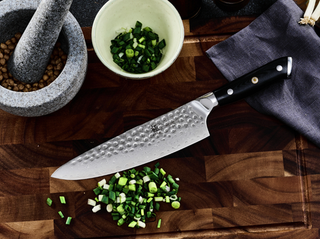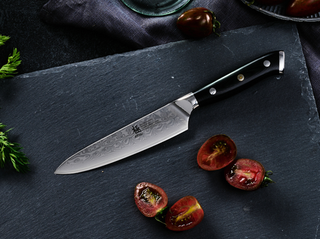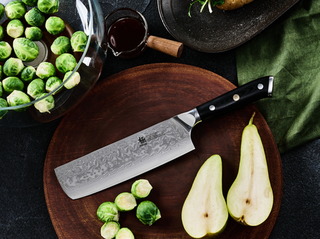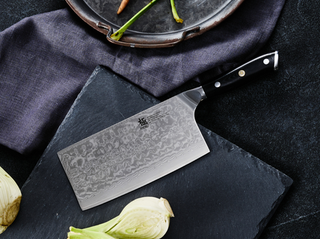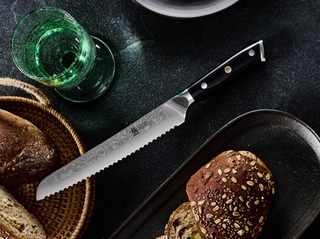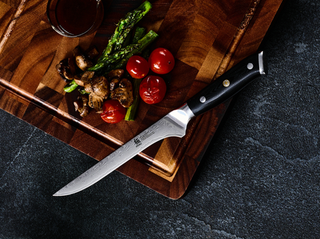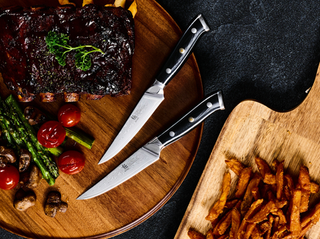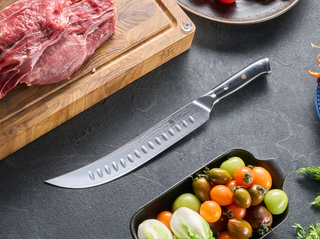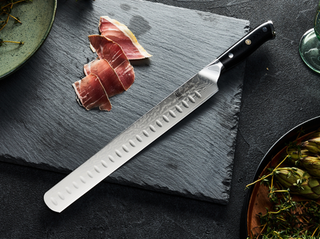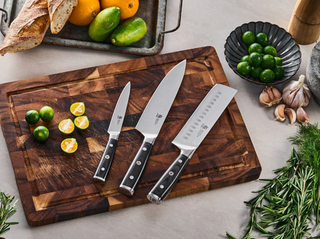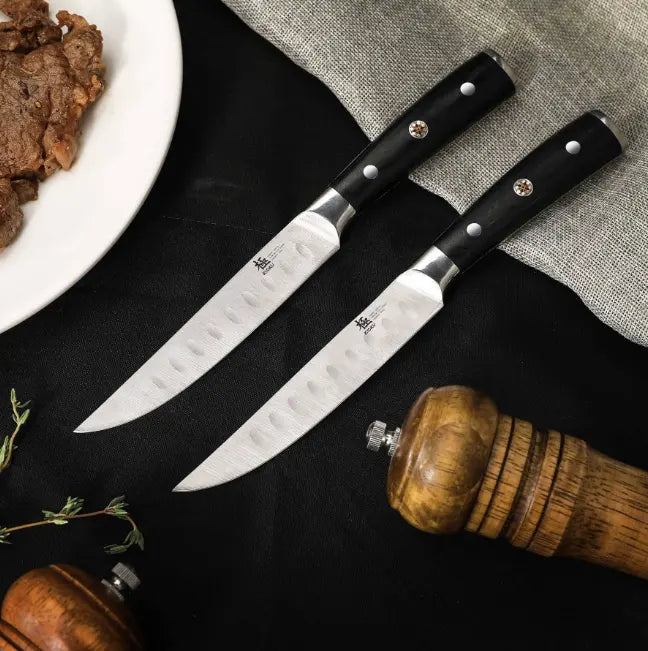We can all agree that cutting through a steak can be challenging and tiring; thus, investing in the best quality steak knife is crucial. However, choosing the best option from the sea of different knives at a silverware store can be a little confusing. But what if I give you the secret of how to choose a good steak knife?
Read the blog to learn the secret of choosing a good steak knife, regardless of the type. Even if you have one high-quality knife, it can do wonders for you.
Understanding Steak Knives
A steak knife is used to effortlessly cut through steak meats without chopping or shredding your meat. This design also keeps you from spending more time cutting than eating the steak you've diligently cooked.
A steak knife is designed to be more powerful than your normal table knife. This is why adding a steak knife to your collection is a good idea. Their ability to smoothly cut through any meat makes them perfect for beef steaks, chicken breasts, chops, etc.

A Good Steak Knife Must Have These Qualities
There is more to selecting a steak knife than just appearance or blade type. You can tell it’s a good steak knife from how it feels in your hand. Steak knives that are cheap and low quality have a generic feel, with no distinction across blades.
On the other hand, a forged blade that is crafted with precision and care feels like an extension of your hand. Allowing you to make safe, accurate cuts easily. It goes with saying if something does not feel right, return it! Here are some qualities that your steak knife must have,
Feel the Knives Handle
The handles of steak knives are made from different materials. However, the two handles that stand out are epoxy resin and treated wood, which provide the ideal handle materials for a steak knife. Let’s see what distinguishes different types of handles in terms of design and performance.
Wood Handles
Wood handles provide a unique combination of natural beauty, warmth, and functionality, making them a favorite option for many professional cooks. These handles provide a pleasant, ergonomic grip, plus the wood texture improves control and prevents slippage while in use. Also, the handle's warmth and capacity to absorb moisture contribute to a comfortable and stable grip, resulting in a confident cutting experience.
Some of the most popular materials include rosewood, ebony, and cocobolo. These wood types are known for their aesthetic and durability, making them the ideal steak knife material for handles.
If you want high-quality and premium steak knives at the best prices, check out KYOKU. They ensure all their knives are crafted from the highest material. We recommend the 4-piece Steak Knife Set 440C Steel if you prefer precise cutting and durability in a knife.
This knife comes with a very sharp blade that ensures precise cutting and good performance in the kitchen. What adds to its quality is its rosewood handle, which is a very durable material made to withstand different conditions.
Plastic Handles
Plastic handles are extremely robust, making them resistant to impact and wear over time. Allowing you to cut through tough foods smoothly. Also, plastic handles are very water resistant, reducing damage from moisture or repeated cleaning.
Plastic handles come in different types. Some of the most popular materials are polyethylene and polypropylene. These plastic types are known for their strength and resistance to different chemicals.
Metal Handles
Steak knife handles that are made from metal are appealing and come with many qualities. Metal handles are known for their outstanding balance and durability. These handles may withstand hard tasks and the rigors of regular use. The blade's balance is further enhanced by adopting metal handles that provide a firm grip.

The Edge of The Blade
The main thing that sets a steak knife apart is its blade edge. The blade edge of steak knives comes in two types: serrated and straight-edged.
Serrated blade edges are more common than straight-edged. Their sharp teeth make it look like a saw. When you use a serrated blade, you can cut through harder meat that is juicy on the inside. Similar to a medium-rare steak, which should be neatly sliced into bite-sized pieces. Straight-edge knives, on the other hand, come with straight and long blades. These are usually thicker as well. Making it perfect to cut in one smooth slice as compared to the sawlike motion of a serrated edge.
The difference between both is longevity. Serrated-edge knives work for a longer time than straight-edge knives. However, if you invest in a straight-edge knife, make sure to sharpen it from time to time to keep the blade in good condition.
Length of the blade
The length of a blade also plays an essential role in selecting the best steak knife. The typical blade size of a steak knife is from 5 inches to 7.
Note that smaller blades are recommended for cutting steak. Steak knives with short blades allow you to use the knife more efficiently and comfortably. Longer blades, on the other hand, are good if you want to look elegant while eating. These make cutting through steaks difficult and shaky.
Choose Knives with a Full Shank
The shank or tang makes a knife more competent. The tang is the part of the blade that extends into the handle. When the tang is short or half, cutting through a steak can cause the blade to break.
A high-quality steak knife usually comes with longer tangs. Thus, the blade won't slip off, and the knife will feel more safe.

Go for Stainless Steel
Always make sure the steak knife that you buy is made from the highest quality blade. Stainless steel blades are recommended for most knives because of their sharpness and durability as compared to cheaper materials out there.
Conclusion
Go get your steak knife now and start preparing steaks at home. Selecting the right knife is crucial for smooth, safe, and comfortable cutting. A good steak knife is more than just looks when it comes to buying a knife. Refer to this guide when you go to buy your perfect steak knife.
